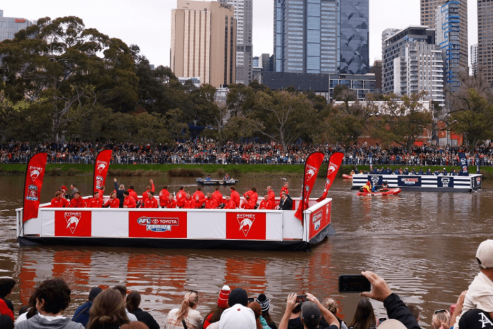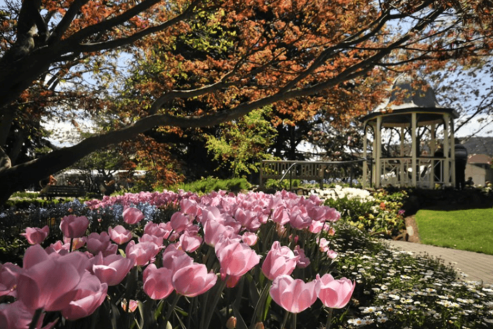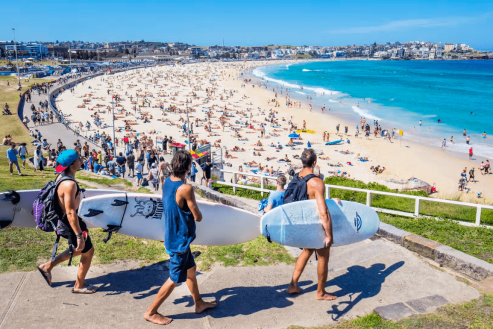Menu
You can manage your membership and billing method by clicking here
Terms of Service
Privacy Policy
Copyright © 2025 Office of Immigration Australia, a private company registered in Australia. All Rights Reserved.

Checking membership status...
 EXCLUSIVE MEMBERS ONLY ACCESS
EXCLUSIVE MEMBERS ONLY ACCESSTo access this month’s edition & Member’s only resources, enter your registered email address.



This bulletin is for members only, and provides our members with month to month updates on Australian immigration policy changes and consequential opportunities. Opportunities are found via federal and state government policy shifts for the demand and supply for certain occupations.
This bulletin will keep you up to date so that you do not have to employ expensive immigration lawyers to provide you with monthly research.
October 2022 has landed, the dust from the pandemic is settling, and the time to act for skilled migration is now! The Organisation for Economic Co-operation and Development (OECD) has noted that Australia is grappling with the second-worst skills crisis in the developed world. This month, the Minister for Home Affairs Clare O’Neil stated that “the impact of Covid has been so severe that even if we exhaust every other possibility, Australia will still be many hundreds of thousands of workers short.”
As a response, the Australian Government has now raised the permanent migration cap for the first time in a decade, and has thrown its full support behind a ‘Big Australia’ aided along via permanent migration.
Despite reduced migration during the pandemic, more than a million people have moved to Australia since 2016, and with international borders now open, Australia is quickly ‘making up’ for lost immigration! Along with the Federal and State Governments, industry groups, companies, small business, service providers and professional bodies have all been crying out for a large influx of immigration to plug nation-wide skilled worker shortages … and there’s room for everybody!
In this month’s ‘Federal News,’ as noted, the Australian Government is raising the cap on permanent migration for the first time in 10 years! The goal of the increase is to help fill massive skilled workforce shortages! There are more than 480,000 job vacancies across the country, but with unemployment at an almost 50-year low, employers are struggling to fill the gaps, and with the Baby Boomer generation about to retire, the skill shortage is expected to only get worse!
The government has also now promised $36 million to hire 500 surge staff over the next nine months to process Australia’s visa backlog.
As of 1st October 2022, the Priority Migration Skilled Occupation List (PMSOL) remains in effect. Visa applications with an occupation on the PMSOL continue to receive priority processing.
In this month’s ‘State News,’ Victoria is expected to face a shortage of almost 400,000 workers within the next three years, amid warnings the lowest unemployment for almost 50 years and soaring job vacancies could soon act as a handbrake on the state economy.
The Western Australian government has also announced new changes to its migration program as part of its efforts to try and make WA the most attractive state for skilled migrants.
The State Skilled Migration Programs for Queensland (Qld), Victoria (Vic), Western Australia (WA), Australian Capital Territory (ACT), New South Wales (NSW), Tasmania (TAS), and South Australia (SA) remain open to Offshore Applicants! The Northern Territory program still remains closed (to offshore applicants) due to pandemic restrictions. The Australian State Governments hope the influx of new visa holders will help alleviate labour shortages around the country.
In this month’s ‘Economic News, KPMG modelling shows that Australia has half a million fewer skilled migrant professionals than it did before the pandemic.
Business groups are now calling for immediate efforts to ramp up migration. The Business Council of Australia chief executive Jennifer Westacott also said there needs to be a “catchup boost” to the permanent migration program to tackle skill shortages!
In this month’s ‘Student News,’ the Australian government has announced that post-study work rights for international students have been greatly extended for holders of certain degrees linked to the many skill shortages prevalent in the Australian economy! This big announcement is expected to dramatically boost Australia’s competitiveness as a study abroad destination!
All this and much more in the October issue of The Australian Immigration Bulletin! Let’s take a deeper look at what has happened so far and what is planned for the remainder of October 2022 in Australian Immigration, so that you can start planning!
As legislation and travel requirements are constantly changing, we strongly recommend obtaining advice on your individual situation from a Registered Migration Agent.
Please click here to book a consultation with one of our Registered Australian Migration Agents, located in Australia.

Australia’s 2022-23 Migration Program has been carefully designed to boost the social and economic outcomes that meet Australia’s needs. In fact, the migration programme was first launched in 1945 following the aftermath of World War 2. Given this long history, it is worth understanding how it works. The Australian Immigration Bulletin exists to help explain this in more detail.
As we’ve entered the 10th month of the year, join us for a look at the latest news and developments in the world of Australian Immigration!
We asked those who have established themselves with skilled jobs to share their experience and tips for a career in Australia.

We spoke with Abdullah, a skilled migrant and civil engineer currently working for a private company.
Please tell us about yourself and when you moved to Australia.
My name is Abdullah and I come from Bangladesh and I moved to Australia in 2012.
What are some mistakes some migrants could avoid while looking and applying for jobs?
One acquaintance of mine said that if I found it hard to find a job in my sector, then it’s better to go with customer service or a hospitality job. This is not a bad idea for when you first arrive in Australia. But that is not your limit. The sky is your limit.
My advice to people who are studying, or who are looking for a job is to not limit your ambition.
It is difficult sometimes, because many people do not have the English level to match the requirements, but the language level is not always the main deal-breaker.
What is it that the employers are mainly looking for?
In my opinion, when the employer is looking for someone, they are looking for a sincere person that fits their purpose. They don’t look at whether you are local or international. If you have a good academic background, if you are sincere, if you can prove that you can serve them well, there is no reason for them not to hire you. When you are doing the job search, go beyond your limits.
What other practical advice can you give?
I made a lot of mistakes preparing my resume and cover letter. I didn’t pay much attention to them. During the shortlisting process, the employers don’t see you, they cannot know how smart you are. You probably need to speak to your local friends or those who are already working in the industry. Each industry has different applying procedures. Some industries prefer you to go physically and submit your resume, the others prefer you to apply online.
But the first thing is to pay attention to your resume and cover letter because that’s the first thing the hiring person is going to see. That’s the bridge between your employer and you.

Australia is raising its cap on permanent migration for the first time in a decade to help fill massive workforce shortages.
The pandemic and Australia’s tough border policies have exacerbated staffing gaps in many sectors.
Skilled migration from all over the world is needed to fill them, the government says.
There are more than 480,000 job vacancies across the country, but with unemployment at an almost 50-year low, employers are struggling to fill the gaps, and with the Baby Boomer generation about to retire, the skill shortage is only going to get worse.
Skilled trade industries as listed on the Priority Migration Skilled Occupation List (PMSOL) have been particularly hard hit.
Worker shortages have thrown airports into chaos, left fruit to rot on trees, and put immense pressure on hospitals, a national jobs summit in Canberra heard last month.
“The impact of Covid has been so severe that even if we exhaust every other possibility, we will still be many hundreds of thousands of workers short.” Home Affairs Minister Clare O’Neil said.
Permanent migration rose to about 190,000 per year in the mid-2010s before falling in 2017. But business and union figures – as well as political opponents – are calling for more migrants. “[We are] moving to a system that recognises that we are in a global war for talent,” Ms O’Neil said.
The government has also promised A$36 million for extra staff to help clear huge visa processing backlogs.
Despite reduced migration during the pandemic, more than a million people have moved to Australia since 2016. And for the first time Australia’s census has revealed more than half of the population was born overseas or has a parent who was.

Anthony Albanese has explained how the boost to Australian migration will work, as the country battles a skills crisis.
Anthony Albanese says he is “unashamedly” in favour of giving migrants the security that comes with a pathway to permanent residency.
It was announced at the jobs and skills summit that Australia would speed up visas for foreign workers as a way to address the country’s critical labour and skills shortages.
Australia’s permanent migration cap will be lifted to a record number of places this year and $36.1m will be spent on a surge workforce to clear a visa backlog.
The Albanese government will also extend post-study work rights for foreign graduates of Australian universities by two years in areas of skills shortages.
And it has also flagged an increase in the income thresholds for work visas, which currently require an annual minimum wage of $53,900, for the first time in almost a decade.
He said his government was yet to settle on the “mix” of temporary and permanent migration pathways provided to foreign workers.
“But I say very unashamedly that my starting point is in favour of giving people the security that comes with a path to permanent migration, a path to being an Australian citizen,” he said.
“My general approach is (that) we are with the exception of First Nations people a nation of migrants or descendants of migrants.”
Mr Albanese said Australia had a long history of people coming from overseas and “putting a stake down”.
“They’ve been able to get a mortgage, to have kids, have a family.” he said.
Mr Albanese said that pathways to permanency helps Australia become a more attractive destination for migrants in order to compete in the global labour market for in-demand skills.
The boost to migration numbers is one of 36 immediate initiatives the Albanese government has committed to following the two-day jobs summit, which brought together representatives from unions, business and the public sector.

The Albanese government’s needs to brainstorm ideas for putting Australia at “the top of the charts” for skilled migrant professionals, top executives say, and some warn that big business is holding back on committing money to big projects due to labour shortages.
“We’ve got to get Australia back to the top of the charts in terms of where people want to come and work,” said Coles chief executive Steven Cain. “Every business that I speak to is seeing increasing staff churn levels.”
Demand for technology workers is so high that Coles, which is trying to cut costs and make its online shopping operations more efficient, is using workers located overseas for some work that it would usually do in Australia and carefully prioritising projects, Mr Cain said.
Rob Scott, head of the nation’s second-largest employer, Wesfarmers, said the WA-based conglomerate was finding it tough to fill jobs ranging from construction and engineering to skilled buyers in its retail businesses.
“Almost any role is hard to fill,” he said. “Some of the skilled designer roles and buyer roles in retail are hard to come by. And it’s not just skilled labour – if you look at a lot of regional areas and small businesses are really struggling.
“Cafes, restaurants, hospitality, tourism businesses, particularly in regional areas, are struggling. That doesn’t have a direct impact on our businesses, but it has an indirect impact because a lot of those small businesses are customers of Bunnings, Kmart and Officeworks.”
Mr Scott urged the government to consider more immigration and said that due to the skilled labour shortage and higher costs, it was difficult for the $54.7 billion Wesfarmers group to commit to key projects such as doubling the capacity at its Mount Holland lithium mine.
Suncorp CEO Steve Johnston also mentioned that skilled workers are hard to find due to strong competition for them in Australia.
AGL Energy CEO Graeme Hunt is also having difficulty finding skilled professionals across the board.
“At AGL we have a diverse workforce and, like many businesses, one of the challenges at the moment is recruiting skilled talent,” he said. “These areas are always highly competitive areas, and we’re finding this to be the case now more than ever.”
Global reach
Dig Howitt, CEO of medical device group Cochlear, said it was not surprising that finding people with data, digital tools and software skills was difficult given the shift to a more virtual and connected world.
Paul Perreault, boss of biotech group CSL, said finding good scientists and researchers was always hard. “Right now we’re looking for experts in vaccinology because we’re expanding the flu business with our new products.” The company’s seasonal influenza vaccine sales surged 16 per cent, hitting a record volume of 135 million doses distributed. CSL also needs people specialised in therapeutic goods, including nephrology and implants.
In the engineering and construction industry, contractors have been struggling to find enough workers to build an enormous pipeline of infrastructure projects.
Downer EDI CEO Grant Fenn supports an increase in skilled migration. He says the company, which provides services from running Melbourne trams to fixing roads and building wind farms, usually has about 2000 jobs vacant but now has more than 3000 jobs open.
These include people with electrical skills who can work on energy networks. “These are difficult skills to introduce because you’ve got to be accredited,” Mr Fenn said.
To fulfil its commitments, Downer has asked some staff to work longer hours and is paying overtime, and is also using more labour-hire agencies and subcontractors.
Monadelphous CEO Rob Velletri said the Perth-based engineering group was going to be more selective in the contracts it took on and prioritise projects that provided secure, long-term returns because “there’s more work to do than people that are available”.
The company employs almost 8000 people including subcontractors and labour is its biggest cost. It is trying to hire people and improve the productivity of existing employees.
Cement manufacturer Adbri is also struggling to find workers and has 100 vacancies across its business, according to CEO Nick Miller.
Kevin Gallagher, CEO of oil and gas producer Santos, said companies were having to pay more attention to their working environments, including flexible working policies and office fit-outs, to find and retain staff.
This is in addition to managing ongoing disruption in workforces due to people isolating with COVID-19, he said.
“It comes back to not trying to do all your projects at once because you’ve got to staff effectively and stay focused on your delivery, your execution,” Mr Gallagher said.
Intellectual property services group IPH is making more of an effort to explain why workers should join the firm, says CEO Andrew Blattman.
Transurban chairman Lindsay Maxsted said that while skills shortages were not getting any worse, they were not getting any better either.
Low unemployment meant Australia could absorb more migrants, Mr Maxsted said. “I think we can deal very positively with a large influx of immigration … there’s room for everybody.”

The Australian government has announced that it will increase its permanent immigration in the current fiscal year as the nation grapples with skills and labour shortages.
Home Affairs Minister Clare O’Neil announced the increase for the year ending June 30, 2023, during a two-day summit of 140 representatives of governments, trade unions, businesses and industry to address skills shortages exacerbated by the pandemic.
O’Neill said Australian nurses like many other professional occupations, have been working double and triple shifts for the past two years, flights were being cancelled because of a lack of ground staff and fruit was being left to rot on trees because there was no one to pick it.
Australia would establish a panel to rebuild its immigration program in the national interest, she said.
Prime Minister Anthony Albanese announced on Thursday, the first day of the Jobs and Skills Summit, that 180,000 free places would also be offed in vocational education schools next year at a cost of 1.1 billion Australian dollars to reduce the nation’s skills shortage.
Australia imposed some of the strictest international travel restrictions of an democratic country for 20 months early in the pandemic and gradually reopened to skilled workers from December last year.

Home Affairs will get a $36 million funding boost to clear Australia’s extraordinary visa backlog, Immigration Minister Andrew Giles has announced, as hundreds of extra public servants are deployed to process applications from businesses in desperate need of workers.
Labor is also poised to increase the salary a migrant must earn to qualify for a skilled worker visa, but unions and businesses disagree about how high the threshold should be.
Mr Giles announced at the Jobs and Skills Summit the federal government will invest $36.1 million to hire 500 surge staff over the next nine months to process Australia’s backlog.
The funding boost is on top of the 180 additional public servants the government has deployed to process visas and 190 staff who are currently being onboarded.
“In addition to clearing the backlog, this will help deliver the permanent migration program that my friend [Home Affairs] Minister [Clare] O’Neil just spoke to,” Mr Giles said, referring to the government’s pledge to raise the permanent migration cap.
“The backlog will be cleared, waiting times will continue to come down,” he added.
Mr Giles also revealed some early successes in reducing visa wait times.
The median time taken to process a temporary skilled visa has fallen to 42 days from 53 days in May. The median time taken to approve new businesses for sponsorship has halved to 18 days and students are now waiting an average of 31 days for a visa, down from 41 in May.

Victoria is facing a shortage of almost 400,000 workers within the next three years, amid warnings the lowest unemployment for almost 50 years and soaring job vacancies could soon act as a handbrake on the state economy.
A report by Victoria’s new Skills Authority has suggested the state is in danger of not having enough suitable workers across a range of key industries.
The report warns Victoria is facing a looming shortage of about 373,000 workers by 2025.
That includes 65,000 health and aged and disability care workers, 90,000 service sector workers, 41,000 teaching staff, 34,000 construction workers and 64,000 financial services and IT professionals.
It warned that the difference between the skills of the workers currently available, and those that will be needed by businesses to cope with new industries and technologies would be a major problem in the coming years.
“Victoria’s labour market is currently experiencing a high-level mismatch, with employers citing a lack of skills as a reason for recruitment difficulties,” the report said.
“There are both labour and skills shortages across sections of the economy,” the report said.
“Regional areas are feeling these workforce challenges most acutely.”
It found that Melbourne will need an extra 290,400 workers by 2025. But other parts of the state are also being squeezed, with regional areas facing a shortage of 82,000 workers by 2025. Gippsland, for example, is facing a shortage of 12,900 workers. The surf coast area is expected to be short by about 18,300 workers, while the Goulburn area to the north-east will need an extra 8000.
“Changing demographics are putting pressure on local services, while skills shortages can hamper local industry growth,” it said.
It follows figures from the Bureau of Statistics last week showing Victoria’s unemployment rate dropped to just 3.1 per cent in July, the lowest since 1974.
Business groups and unions have singled a shortage of skilled and unskilled workers as a key problem ahead of the summit, with acute shortages in health, teaching, construction, hospitality and agriculture.
Victorian Chamber of Commerce and Industry chief executive Paul Guerra said Victoria was in a situation where it had more jobs available than people.
“It doesn’t matter whether you’re skilled or unskilled, there are jobs if you’re working,” he said. “It’s across the board – across regional Victoria, and metropolitan Victoria, it’s all the same. They just can’t get enough people. You see it in the hospitality sector you see it in the retail sector. There are businesses that can’t open because they don’t have staff.”
Business groups are calling for immediate efforts to ramp up migration to tackle skills shortages. Business Council of Australia chief executive Jennifer Westacott said Australia needed to move away from a short-term, ad hoc migration system, to a long-term planned migration program.
She said there needed to be a “catchup boost” to the permanent migration program to tackle skills shortages, with at least two-thirds of places set aside for skilled workers.
Training Minister Gayle Tierney said skills shortages linked to low unemployment was “a good problem to have”, saying the government was ramping up efforts to boost skills to meet future demand for workers.
Premier Daniel Andrews has also backed lifting the migration intake.

In re-adjusting its migration program for 2022-23, Western Australia (WA) has eliminated additional English requirements for professional and managerial occupations, reduced the amount of money applicants need to demonstrate sufficient funds, and lowered the employment contract requirement for skilled visa applicants to six months.
“The changes to the State Nominated Migration Program will build on our work to boost skilled migration in areas of high demand by making migration to WA easier,” Premier Mark McGowan said in an official statement.
“We have been successful in advocating for WA’s needs nationally. These latest changes are about making it easier for people to migrate to WA on skilled migration visas,” Education and Training Minister Sue Ellery said.
“They are targeted changes that are focused on attracting more skilled migrants to the state, and will be reviewed as the State’s skills challenges ease,” she added.
For the Subclass 491 visa, the state has removed the work experience condition for both onshore and offshore applicants which is a great move.
Those applicants whose occupations are in the state’s list, they will no longer be required to show work experience which was the case earlier.

In view of the global pandemic, the Australian government during 2020 and 2021 imposed some temporary travel restrictions. Now various states of Australia have started issuing invitations and nominating the candidates for skilled migration.
Australia has a point-based system for skilled migration. The Australian State and Territory government programs have two ‘point-tested categories’, being;
The ‘Skilled Nominated- Subclass 190’ is a points-tested permanent category for skilled workers who are nominated by an Australian State or Territory government. The ‘Skilled Nominated- Subclass 190’ enables skilled workers and their families to live, work and/or study in Australia indefinitely with full work rights. You would generally be expected to reside for 2 years in the State or Territory which nominated you.
The ‘Skilled Work Regional (Provisional)- Subclass 491’ is a points-tested temporary category for skilled workers who are nominated by an Australian State or Territory government. The ‘Skilled Work Regional (Provisional)- subclass 491’ enables skilled workers and their families to live, work and/or study in regional areas of Australia for up to five years. This nomination then provides pathways to permanent residency after three years. For migration purposes, most locations of Australia outside of major cities (Sydney, Melbourne, Brisbane, Perth, etc.) are classed as regional areas.
Key requirements for an Australian State or Territory Government immigration nomination:
To apply for either of these nominations, ‘Skilled Nominated- Subclass 190’ or
‘Skilled Work Regional (Provisional)- Subclass 491’, you will still need to lodge an Expression of Interest (EOI).
When deciding whether to nominate an applicant, state or territory nominating agencies refer to their own criteria, which vary from state to state. As a starting point, all applicants must show they have an occupation on the relevant state or territory occupation list, and that they have a genuine intention to reside in that state or territory.
State and territory agencies offer a number of different ‘streams’ and generally cater to offshore skilled applicants, onshore skilled applicants, and recent tertiary graduates.
Candidates currently residing overseas who are interested in State and Territory nomination should ensure their Skillselect EOIs are up-to-date.
Please note, the below is information on general requirements and does not take into account any of your personal circumstances. You must check the State/Territory information carefully to ensure you can meet all the requirements for nomination.

Program Status Update
To manage Queensland’s COVID recovery response, applicants currently residing offshore are now able to apply.
Depending on your occupation and situation, there are two state nomination options available for skilled migrants through Queensland.
For Queensland state nomination, prospective applicants must meet the Department of Home Affairs requirements, state-specific occupation requirements and have skills in an occupation that is available on the Queensland Skilled Occupation List.
You may undertake employment once onshore in Queensland through:
Offshore applicants meeting the minimum published requirements can now lodge a Registration of Interest (ROI).

Program Status Update
Now open to offshore applicants, the program provides skilled migrants with a pathway to permanent residency in Victoria. The skills that successful applicants bring to Victoria benefits employers and the broader Victorian economy.
The program provides two visa pathways.
The Skilled Nominated visa (subclass 190) is a permanent visa for skilled migrants to live and work anywhere in Victoria. The Skilled Work Regional (Provisional) visa (subclass 491) is for skilled migrants to live and work in regional Victoria and provides a pathway to permanent residency through the Permanent Residence (Skilled Regional) visa (subclass 191).
As with previous years, applicants will first need to submit a Registration of Interest (ROI) and then be selected on competitive merit to apply for visa nomination.
Before submitting a ROI, applicants should ensure that they meet all eligibility requirements:
ROIs will be assessed until May 2023.

People residing offshore are now eligible to be considered for Western Australia (WA) State nomination. Invitations to apply for WA State nomination will be via the ranking system.
The Western Australia Critical Skills Occupation List identifies the occupations in current demand in Western Australia. This List is important if you want to apply for Western Australia nomination for either a:
Please continue to monitor this segment for any further changes. With world-class education, healthy job opportunities and strong public health management, WA is a safe place to live, work and study.

The ACT Critical Skills List identifies the occupations in current demand in the ACT. This List is important if you want to apply for ACT nomination for either a:
The ACT Government will update this list every four months to make sure that the ACT Skilled Migration Program adapts and responds to the evolving critical skills needs of the ACT economy.
The Canberra Matrix is weighted to ensure that applicants who will make a positive economic contribution to the Territory and/or have demonstrated a genuine commitment to the ACT are more likely to be ranked and invited to apply for ACT nomination.
*ACT nomination does not guarantee a migration outcome. You must still meet the Department of Home Affairs criteria.

To manage South Australia’s COVID recovery response, applicants currently residing offshore are still able to apply.
Depending on your occupation and situation, there are two state nomination options available for skilled migrants through South Australia.
For South Australian state nomination, prospective applicants must meet the Department of Home Affairs requirements, state-specific occupation requirements and have skills in an occupation that is available on the South Australian Skilled Occupation List. Offshore applicants meeting the minimum published requirements can now lodge a Registration of Interest (ROI).

Changes to nomination requirements:
Only minimal changes have been made to nomination requirements for the Tasmanian 2022-23 program year. A summary of this information is below:
Working in Tasmania
The two state nomination options available for skilled migrants through Tasmania are:
The Tasmanian State Nomination Skilled Migration Program supports Tasmanian businesses and increases the state’s working age population. It does this by attracting and retaining migrants with skills genuinely in need by employers, or with the capacity to settle in Tasmania through skilled employment in the long-term, and business activities that will increase employment opportunities.
Due to the effects of Covid-19, Migration Tasmania’s current nomination priorities continue to be:
Tasmania’s skilled migration program is for people wanting to move to the state who have skills that Tasmania need. Skilled migrants are attracted to Tasmania because of the state’s enviable lifestyle, career opportunities, affordable housing, reputable schools and a globally recognised university.

The New South Wales government has invited applications from offshore migrants under the following nomination streams:
The NSW State Government announced that offshore applicants skilled in certain ANZSCO unit groups are still eligible for NSW nomination.
Offshore candidates criteria:
If you are residing offshore, you must:
*Please note: Invitation rounds occur throughout the financial year.
Some of these identified ANZSCO unit groups include engineering managers, health and welfare service managers, production managers, primary and secondary school teachers, pharmacists, dental practitioners, midwives, registered nurses, social workers, chefs, cooks, and other professions on the Priority Migration Skilled Occupation List (PMSOL).

Program Status Update
The 2022-23 migration program is well underway and the Northern Territory remains open for new onshore nomination applications. Offshore applications remain currently closed due to Covid-19 restrictions.
The Australian Migration Bulletin will continue to update you regarding the Northern Territory nomination migration program for offshore applications over the next monthly bulletins.

The Priority Migration Skilled Occupation List (PMSOL) identifies 44 occupations which fill critical skills needs to support Australia’s economic recovery from COVID-19. The list is based on expert advice from the National Skills Commission and consultation with Commonwealth departments.
Visa applications with an occupation on the PMSOL will be given priority processing. All other skilled occupation lists will remain active, but the PMSOL occupations will take priority.
The list is temporary and priority occupations may change as Australia recovers from the pandemic. The Government and the National Skills Commission will continue to monitor the impact of COVID-19 on the Australian labour market and assess Australia’s skills needs as they evolve and new sources of data emerge.
There has been no additional changes during the month of September 2022 to the Priority Migration Skilled Occupation List (PMSOL). Strengthened labour market testing will continue to allow numbers of sponsored skilled workers to migrate to Australia to fill urgent skills needs in critical sectors, helping to create Australian jobs and rebuild Australia’s economy.
This bulletin segment will be updated with the most up-to-date list when priority occupations change.
As of 1st October 2022 , 44 occupations remain on the PMSOL including (ANZSCO codes):
As of 9th September 2022, people entering Australia do NOT need to provide evidence of vaccination status. Additionally, people leaving Australia will NOT be asked to provide evidence of their vaccination status. Unvaccinated visa holders do NOT need a travel exemption to travel to Australia. It is however important to remember that airlines, vessel operators and other countries may have specific requirements that travellers need to comply with.
Please see the list of vaccines that are recognised by the Australian government for travel purposes here. Fully vaccinated visa holders should also check Australia’s travel requirements prior to departure.

Since the end of the worst of the pandemic, industry groups, companies, small business, service providers and professional bodies have been urging the commonwealth to open the door to skilled immigrants to plug worker shortages. Doing so would boost productivity, economic activity, demand, confidence and taxation revenue. With unemployment falling to 3.4 per cent, such calls have intensified. The OECD has noted that Australia is grappling with the second-worst skills crisis in the developed world. KPMG modelling shows the nation has half a million fewer skilled foreign professionals than it did before the pandemic. KPMG chief economist Brendan Rynne says the collapse in net migration over the past two years has left national income $80bn lower than it would have been otherwise.
The NSW Treasury forecasts a shortfall of 304,000 workers in that state alone by 2025-26. Writing on Monday, NSW Treasurer Matt Kean has a point when he says he has heard a lot about the Albanese government’s jobs summit on September 1 and 2. But the sound NSW needs to hear, he says, is “passports being stamped’’.
The issue will be top of the list for industry groups and the government. But it also has its own momentum. That is important!
The Australian government recognises the growth dividend of a bigger Australia. But at this stage, boosting immigration is more about catching up. KPMG analysis of official data shows Australia recorded no increase in skilled migration in 2021-22. Federal budget papers anticipate it will take until 2024-25 for net migration to return to pre-pandemic levels of 235,000. By then, the net migration deficit would be 600,000, Dr Rynne says, requiring net migration to be boosted to 300,000 a year until 2030 to return to the pre-Covid trajectory. With other nations also seeking workers, the time to act is now.

A Queensland doctor with more than 40 years of experience is warning that Australia’s doctor shortage is likely to get worse and that more medical practices could close as graduates abandon general practice as a specialty.
Susan McDonald, who has been practising in Cairns for the past 26 years, says GPs are “the domestic servants of the medical world”.
Between seeing dozens of patients every day, Dr McDonald says GPs fill out ever-increasing mountains of paperwork and reports for everything from workers’ compensation to jury duty excusals.
“It’s easier to go into speciality, much easier, as it’s a narrow focus,” she said.
“You can be good at that one thing, and you’ll get paid four times more than a GP.”
Dr McDonald said the practice she worked in was three doctors short of its usual rota.
She said it, like many other medical practices, was on the precipice and warned it could have wider ramifications for patients and the community.
“If we can’t get more doctors, then the practice will have to close and that’s already happened to a number of other practices,” Dr McDonald said.
Walking out ‘in droves’
A Medical Deans of Australia and New Zealand survey found that 16.7 per cent of final year medical students listed general practice as their first preference for future specialty in 2017.
The same survey in 2021 found that numbers have dropped to 14.7 per cent, the lowest rate in 10 years.
A junior doctor who asked to remain anonymous out of concern for future career prospects said the stress GPs faced was pushing medical graduates away from the speciality.
“To be a good and safe GP requires an enormous breadth of skill,” they said.
“You need to know a little bit about all there is of medicine.
“It’s a huge task that doesn’t just take medical school and GP training — it’s something that you acquire over 15 to 20 years to do it well and feel comfortable in your knowledge.
In a statement, federal Health Minister Mark Butler admitted junior doctors were “walking away from general practice in droves” and blamed the previous government”.
“The Albanese government is committed to investing in general practice and strengthening Medicare with almost $1 billion of investment,” he said.

Though it has up to 80 people on its waitlist, a newly refurbished aged care facility in central Queensland has more than 20 empty beds due to staff shortages.
After two decades of planning, stage one of a $47 million redevelopment has just been completed at Benevolent Living in Rockhampton.
But the entire top floor of the redevelopment, including 22 new beds, is sitting idle because the not-for-profit organisation cannot find aged care workers to accommodate extra residents.
“Through financial prudent management, we were able to deliver this beautiful new residential aged care building, only to find that we can’t fill the buildings because we don’t have the staff,” chief executive Alison Moss said.
Ms Moss said the industry had chronic staffing issues for years which was then exacerbated by the pandemic.
“It’s quite ironic to build this perfect new building, to be running empty beds, delaying admissions,” she said.
“It’s just trying to get all the different stakeholders to be working together … because from what I can see, the healthcare system and aged care are just imploding and we need solutions now.”
Aged & Community Care Providers Association chief executive Paul Sadler said Ms Moss’s situation was prevalent around the country.
“It’s common for providers to be experiencing a 10 per cent, sometimes more, vacancy rate in their rosters, partly because people are sick, either with COVID or other things, but also because of severe staff shortages,” he said.
According to a recent report from the Committee for Economic Development of Australia, the industry needs an extra 35,000 aged care workers across the nation per year to fill growing skills shortages.
Mr Sadler said the report also found the industry had lost 65,000 staff in the past year.
“We also know that if we do have a 10 per cent vacancy rate, that translates to around 27,000 staff in residential aged care being short, and another 15,000 in home care services.”
Aged care worker visas a ‘priority’
Mr Sadler also wanted to see a dedicated visa introduced for aged care workers.
“That’s welcomed and the [workers] have been coming into services in regional Queensland, but they’re relatively small numbers; we’re talking dozens rather than the thousands that we need,” he said.
“We need a priority for aged care worker visas, and discussions with the federal government have been relatively positive around that, but we now need some action.”
Ms Moss agreed a faster immigration processes would be helpful.
“I have nurses overseas now that have applied to come and work for us; we’ve accepted their application but they are in this holding pattern of going through the processing.”
The Department of Health and Aged Care confirmed the government was considering options to provide “streamlined pathways for migration of aged care workers”.
It said this was in addition to workforce initiatives already in place to attract new workers, including advising service providers on how to get and retain staff, as well as offering various placements and scholarships for care nurses.

The hospitality industry has been hit hard by the skills shortage and now one major operator in the space is offering $5,000 bonuses for new full-time workers.
The owner of Sydney Restaurant Group, Bill Drakopoulus, said businesses had been struggling to fill essential roles.
“The whole industry is desperate and we certainly are a big part of it,” Drakopoulus said.
“We’ve got a whole range of jobs, from waiters, to sommeliers, to assistant managers, to managers, to cooks, to chefs.”
Drakopoulus said there was a vacancy for almost every position to boost the workforce to remain operational.
“Many of our restaurants are limiting capacity or closing certain shifts, simply because we don’t have the manpower to be able to be at full capacity, which is damaging for us and our industry and the economy,” Drakopoulus said.
Skills shortage
Australia now has far more available jobs than unemployed people, according to new data from the Australian Bureau of Statistics (ABS).
Australia’s unemployment rate fell to 3.4 per cent in July – the lowest it has been since August 1974.
“The fall in unemployment in July reflects an increasingly tight labour market, including high job vacancies and ongoing labour shortages,” Bjorn Jarvis, head of labour statistics at the ABS, said when the results were released.
These tight conditions had led some business owners to offer larger pay packets and incentives, just as Drakopoulus had.
But higher staffing costs can be passed on to consumers, since both businesses and individuals struggle with the rising cost of living.

After a tough couple of years, the Sunday brunch and morning coffee runs are back in full swing.
But it is hard not to notice the signs reading “staff wanted” on restaurant and cafe windows.
Business owners are trying to attract employees from interstate and overseas, but are faced with a tight labour market making doing business even tougher.
One north Queensland company has resorted to buying its own 19-room motel to house staff.
Adrian Connors is the operations manager of his family business that runs a bakery, pie shop and restaurant in Mackay.
He said they had no choice but to take matters into their own hands.
Kevin Collins, who owns a restaurant and catering business in the Whitsundays, has also had to find a way to house his staff.
“We do own a little bit of accommodation,” he said.
“Being able to offer accommodation is a significant issue, especially for people coming from out of the region that want to move here.
A cry for help
Last months national jobs and skills summit in Canberra is an attempt to solve widespread worker shortages.
Tourism marketing specialist Tash Wheeler said the situation in Australia was dire.
“We’re at a record unemployment rate right across the country as far as it goes in averages so it’s absolute extremes at the moment.”
The jobs and skills summit has lead to many government decisions to have easier pathways to source professionals from overseas.
“Number one: allow people into the country fast, in order to fill the gaps,” he said.
“Number two: work out a long-term plan and the long-term vision as to how we are going to attract people into an industry which has so much potential.”
“It’s not just about jobs and tourism, it’s about liveability in general.”

Short on time? Here are the highlights:
There is big news from Australia this month that could dramatically boost the country’s competitiveness as a study abroad destination. The government has announced that post-study work rights for international students have been greatly extended for holders of certain degrees linked to skills shortages in the Australian economy.
Two additional years
The extensions should help Australia to increase the stay rate of the international students the country’s economy needs the most. Minister for Education Jason Clare points out that “At the moment, only 16% of international students stay on after their studies end.” He says the longer work permits “will mean they can stay on longer and use the skills they’ve gained in Australia to help fill some of the chronic skills shortages we have right now.”
A working group is being formed to advise the Department of Home Affairs on which degrees will lead to the longer work permits. This group will include representatives from the Council of International Education, the National Tertiary Education Union, Universities Australia, and the Departments of Home Affairs and Education, and their input is due by 28 October 2022.
Universities sector embraces the news
Universities Australia’s CEO Catriona Jackson welcomed the government’s news, saying that “extending post-study work rights sends the right signal to international students who want to use their Australian education in Australia’s regions and cities, when and where there is a clear need for their skills.”
Miss Jackson pointed out the potential impact that the upcoming policy will have:
“Allowing more international students to remain in Australia could see thousands more nurses and doctors working in hospitals from Geelong to Geraldton and Cooma to Cairns. That is not to mention the skills gaps international students will plug across our engineering, information technology, and teaching sectors, etc.”
Career services will be important
The government’s direct linking of study programmes to skills shortages suggests that career services – as well as educator-employer collaboration – will be important to ensuring that students graduate with job-ready skills. Skills shortages are particularly acute in Australia’s healthcare system, for example, and international graduates who can hit the ground running will be key to the recovery of this key public service sector. The urgency of the pressures facing the healthcare system was made clear in an announcement this month by Premier of Victoria Daniel Andrews who said that “thousands of students in Victoria will be able to study for free to become a nurse or a midwife in the state.”
More money for international education
The government also announced that it will funnel AUS$36.1 million into visa processing “to support 500 surge staff over the next nine months.” The idea is to reduce the amount of time students must wait for visa processing and decisions. Delays in this area have dismayed many international students over the past few months and some students have switched their study destination as a result.
Visa processing delays are not unique to Australia: the issue has been problematic in Canada, the US, and UK as well. Anecdotal reports indicate that some students research visa processing times when deciding where they will choose to study, and agents have noted that visa processing has been a major challenge for students over the course of the pandemic.

In a pitch before the government’s Jobs and Skills Summit, Universities Australia said ways must be found to better attract and keep international graduates in the Australian workforce for longer.
Migration pathways and post-graduation work visas for international students to be simplified, so Australia can benefit from the vast numbers of talented individuals who return home once they have finished their degree, says lobby group Universities Australia.
The group, which represents 39 universities, also called for simpler retraining and upskilling pathways, and investment in university and industry research collaborations that would stimulate the economy.
Universities Australia chief executive Catriona Jackson said international students were given automatic rights to remain in Australia after the completion of their studies, but only 16 per cent took up the opportunity. Fewer than 4 per cent of international students eventually move on to permanent residency.
“There are a couple of steps along that visa process that could make it a little smoother so more students can stay in Australia and make a career here,” Ms Jackson said.
“These are enormously bright, promising people who’ve already made a considerable investment in Australia. We just think it’d be smart if the visa process was a little smoother, so that some of those students could consider a job here.”
Barriers to upskilling
Increasing the number of work placements for students is another option UA has canvassed, and Ms Jackson said business would need to step up to find the additional 500,000 places needed each year.
Universities Australia also proposed to boost research collaborations between universities and industry beyond the current R&D tax concession, and to increase the quantum of funding going into the research sector.
UA also says there are simple and practical ways to reduce roadblocks in the supply of skilled professionals, such as increasing the number of practical placements and the creation of accelerator programs for final-year students.

Sydney Opera House illumination in Honour of Her Majesty Queen Elizabeth II. Sydney, NSW. September 2022

Fans flocked to the banks of the Yarra River for this year’s floating AFL grand final parade! Melbourne, Victoria. September 2022

Due to the Covid restrictions, it’s been 1,070 days since the 2019 Grand Final and finals footy has now returned to Melbourne Cricket Ground (MCG)! Melbourne, Victoria. September 2022

Australia beats New Zealand by 25 runs in the final ODI series! Cairns, Queensland. September 2022

3 days of non-stop music at Australia’s biggest international country music festival… CMC Rocks QLD! Willowbank, Queensland. September 2022

Internationally acclaimed musical acts and some of the best food and wine was found at the Toowoomba Carnival of Flowers! Toowoomba, Queensland. September, 2022

With over 580 theatre, music and arts performances the ‘Brisbane Festival’ was fun and inspiring! Brisbane, Queensland. September 2022

A celebration with over 105,000 stunning tulips on display + entertainment and special events… there was something on offer for both ‘young’ and ‘the young at heart’ at the Tulip Time Festival. Bowral, NSW. September 2022

Creativity on display at the largest independent arts festival in NSW, The ‘Sydney Fringe Festival’. Sydney, NSW. September 2022

The entertainment complemented the food and local wine offerings at the ‘Flavours of Mudgee Street Festival’! Mudgee, NSW. September 2022

Adorable little platypuses! Eungella National Park, Queensland. September 2022

Sydneysiders rush to beaches to catch spring sunshine! Bondi, NSW. September 2022
As legislation and travel requirements are constantly changing, we strongly recommend obtaining advice on your individual situation from a Registered Migration Agent. Please click here to book a consultation with one of our Registered Australian Migration Agents, located in Australia.






You can manage your membership and billing method by clicking here
Terms of Service
Privacy Policy
Copyright © 2025 Office of Immigration Australia, a private company registered in Australia. All Rights Reserved.